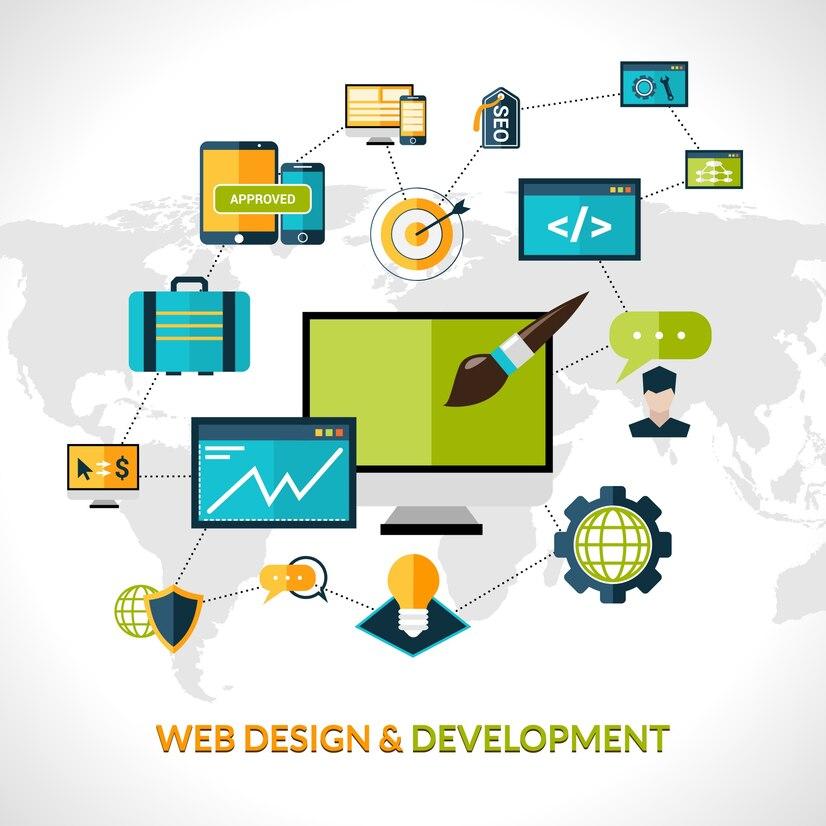The Future of Web Development: Trends to Watch in 2025

Web development is an ever-evolving field, and as we step deeper into 2025, it's clear that the pace of innovation isn't slowing down anytime soon. From AI integration to new design standards, developers are adapting to new tools, user expectations, and business needs at lightning speed.
In this post, we’ll explore the most influential trends shaping the future of web development in 2025—and how developers can stay ahead of the curve.
1. AI-Powered Development Becomes Mainstream
Artificial Intelligence is no longer just a buzzword—it’s becoming an integral part of how websites are designed, built, and personalized. Tools powered by AI are now helping developers write cleaner code, test more efficiently, and create smarter user experiences.
AI-driven chatbots, voice search optimization, and content generation are just the beginning. In 2025, expect to see even more intelligent automation in design systems and backend logic.
2. The Rise of Headless and API-First Architectures
Traditional CMS platforms are being replaced with headless and API-first solutions. This decoupled approach allows developers to build faster, more flexible, and scalable websites by separating the frontend from the backend.
As businesses aim to deliver content across web, mobile, smart devices, and beyond, headless development offers a future-proof solution that works across platforms and devices.
3. Jamstack Continues to Grow
Jamstack (JavaScript, APIs, and Markup) has gained massive traction, and in 2025, it’s set to become the go-to architecture for performance-focused sites. Jamstack offers benefits like faster load times, improved security, and easier scaling—all vital in today’s SEO- and UX-driven digital world.
With platforms like Netlify, Vercel, and Cloudflare enhancing developer workflows, the Jamstack ecosystem is only getting stronger.
4. Web Accessibility Takes Center Stage
Accessibility is no longer optional—it’s essential. In 2025, developers are expected to build inclusive experiences that work for users with visual, auditory, cognitive, or mobility challenges.
Expect more tools, regulations, and community pressure to enforce WCAG (Web Content Accessibility Guidelines) compliance and encourage inclusive design from the ground up.
5. Progressive Web Apps (PWAs) Go Mainstream
PWAs continue to blur the lines between websites and native apps. With features like offline access, push notifications, and home screen installation, PWAs are helping brands deliver fast, engaging user experiences—without needing users to download an app.
In 2025, expect PWAs to become the norm for companies that want app-like experiences without the overhead of app store deployment.
6. Sustainability and Eco-Friendly Development
With growing awareness of digital carbon footprints, sustainable web development is rising. Lightweight websites, efficient code, and green hosting solutions are gaining popularity as developers and companies look to reduce energy usage and emissions.
Sustainability is becoming not just a moral choice but a branding and business advantage.
7. No-Code and Low-Code Tools Empower Non-Developers
While not a replacement for skilled developers, no-code and low-code platforms are becoming powerful allies. They allow non-technical users to prototype ideas or build simple solutions, while freeing developers to focus on more complex tasks.
In 2025, developers are more likely to work alongside these tools rather than compete with them, using them to accelerate delivery and collaboration.
8. Motion Design and Microinteractions Evolve
User experience is becoming more immersive, and microinteractions—like subtle animations and transitions—are key to modern design. These tiny visual cues guide users, improve usability, and add delight to interfaces.
Expect motion design to become more intuitive, efficient, and optimized for performance in the year ahead.
9. Voice and Gesture Interfaces Expand
Voice interfaces are already integrated into smart speakers and devices, but in 2025, they’re expanding into the web. From voice navigation to gesture controls on touchscreen devices, developers will need to consider alternative input methods to stay accessible and innovative.
10. Web3 and Decentralized Apps (dApps) Gain Ground
While still early-stage, Web3 technologies like blockchain and decentralized apps are attracting attention. In 2025, developers may see increased demand for wallet integration, smart contracts, and decentralized identity systems.
Whether Web3 becomes mainstream or remains niche, it's a space worth watching and experimenting with.
Conclusion: A Future Built on Agility and Awareness
Web development in 2025 is about more than just building websites. It’s about creating fast, inclusive, intelligent, and sustainable digital experiences. The tools may change, but the core goal remains the same: building for users.
To stay relevant, developers must continue learning, adapting, and thinking critically about the tech they use and the people they serve. The future of web development isn’t just about keeping up—it’s about building better.
- Art
- Causes
- Crafts
- Dance
- Drinks
- Film
- Fitness
- Food
- الألعاب
- Gardening
- Health
- الرئيسية
- Literature
- Music
- Networking
- أخرى
- Party
- Religion
- Shopping
- Sports
- Theater
- Wellness


